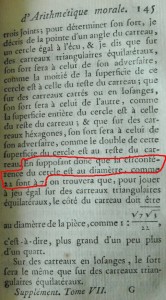We are currently enjoying in Marseille the warmth and delights of a French Mediterranean Bouillabaisse while celebrating analytic number theory and the achievements of É. Fouvry, on the occasion of his 60th birthday.
I think everyone who has been in contact with any of his papers has immense respect for his scientific work. All those of us who have been fortunate enough to talk with him beyond purely scientific matters will also attest to his exemplary intellectual honesty, rectitude, generosity and — also important to my mind — to his sense of humor.
In analytic number theory, we play day to day in a wild down-to-earth jungle. We also all know that somewhere there is a Garden of Eden, where the Riemann Hypothesis roams free, and we hope to go there one day. Fewer know that there is a place even beyond, a Nirvana where even the Riemann Hypothesis is but a shadow of a deeper truth. And fewer still are those who have set foot in this special place. É. Fouvry did, and he was among the very first ones, if not the very first; and more people have walked on the moon than been there.
A few years ago, I wrote a nominating letter for Étienne’s application to the Institut Universitaire de France. There is one sentence that I wrote which still seems to me to summarize best my feelings about this part of his work: Rarely in history was so much owed by so many arithmeticians to so few. This is even truer today than it was then. Reader, if you care at all about prime numbers, recall that without É. Fouvry and very few others (two of whom are with us in Marseille), you might well never have known that the gaps between successive primes do not grow to infinity.




